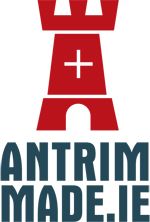In the late 1950s Belfast, County Antrim was a hotbed of engineering excellence in all aspects automotive design and manufacture. From the massive vessels produced at the Harland and Wolff shipyards to the efforts of the Belfast Tool and Gauge company and their revolutionary and ahead-of-its-time DAWB-6 sports coupé.
Our story begins with marine fitter David Woods, who initially worked at the Harland & Wolff shipyards and later joined the aerospace company Short Brothers plc. In 1946, Woods embarked on his entrepreneurial journey, establishing his own enterprise, David Woods & Sons. Over time, this company evolved into the Belfast Tools and Gauge Company, ultimately employing over one hundred people.
In 1949, renowned motorcycle racer Artie Bell, known for his notable second-place finish in the 1947 Isle of Man TT on a Norton, approached his friend David Woods with a unique request: to build a custom-made motorcycle tailored to his preferences. Given that David Woods & Sons was conveniently located near the Dundrod racing circuit, and along a route frequently utilised for the Circuit of Ireland Rally, Woods persuaded Bell to collaborate on the creation of a sports car, rather than a motorcycle.
David Woods approached Bertone and Pininfarina at the Turin Motor Show, but both carrozzeria (Italian coachbuilders) declined the project.
Woods then approached Billy Leitch, a former apprentice who was coachbuilding hearse conversions, primarily based on Rolls-Royce vehicles.
David Woods speaking about the skills of Billy Leitch; “Without him we would have got nowhere. He made the body from 20 gauge steel (rested on a tubular frame and rubber bushes) from a model and sketches I’d made on the wall, there weren’t any proper drawings, for that or anything. I don’t know how he did it, he used wooden patterns so rough you would light your fire with them. He was a genius.”
Bell and Woods the settled on a name for their car, which was less than appealing: “DAWB-6” as a fusion of their initials, with the 6 indicating the engine’s cylinder count.
After finalizing the engineering plans in 1954, construction of the car commenced. The custom-built transmission was seamlessly integrated with the engine to drive the front wheels. The entire drivetrain was transversely mounted and positioned on its side for a low front profile. The all-round independent suspension and steering box were meticulously crafted from solid billets. The DAWB 6 featured disc brakes on all four wheels, initially sporting Borrani wire wheels, which were later substituted with JA Pearce alloys after a theft.
+++
Every week the Ireland Made team brings you two new Irish transport videos. Please support the preservation of Irish transport stories by sponsoring our content creation. Subscribe at IrelandMade.ie or become a supporter on Facebook at https://www.facebook.com/becomesupporter/IrlMade/.
You can also show support by purchasing Facebook stars at fb.com/stars. Your sponsorship supports our vital work.
+++
The windscreen (from a Ford Zephyr Mk2), rear window (trimmed Volvo screen), dash instruments (also from a Zephyr Mk2), and modified Humber Hawk door frames were the only elements borrowed from existing vehicles.
The DAWB’s engine configuration, conceived and crafted by Bell and Woods, stands as one of the most unconventional powerplants ever found in any car. It features a 1413 cc six-cylinder flat engine mounted transversely, boasting dual overhead camshafts, a dry sump, and air-cooling, producing an impressive 136bhp. This results in a specific output of 97bhp per litre. To put it in perspective, even the Aston Martin DB4 GT, which held the title of the world’s fastest car when the DAWB was finished,
The end result was equally extraordinary in its design and in the precision and care taken during construction. Practically every element of the car was custom-made, including the meticulously crafted flush-mounted door handles, the hydraulic struts for the bonnet and boot-lid, and the innovative use of rear window trim as a radio aerial.
The car’s construction spanned eight years, earning it the moniker ‘Davy’s Folly’ among the Belfast Tool and Gauge workers, and perhaps rightfully so. It’s rumoured that he occasionally clocked in 100-hour workweeks on the project.
The ‘Belfast Tool and Gauge DWBS car’ was seemingly never marketed commercially and garnered limited recognition during its era and just a single car was built.
However, declassified documents from the British intelligence service in 2011 reveal correspondence between David Woods and the then British Prime Minister Margaret Thatcher. These letters discuss the prototype car that the Prime Minister was introduced to during her visit to Belfast in 1981.
After achieving his dream of completing the car, David’s interest waned, leading him to shift his focus toward designing a 40 ft steel boat. The DAWB-6 is now in the collection of the Ulster Transport Museum.
The DAWB 6 was a car ahead of its time in so many ways, and at the time re-affirmed Belfast as a hotbed of engineering – what a success story this could have been.
Information sources and photo credits:
AutoShite
Barry Marks
Belfast Tool & Gauge Co./allcarindex.com
Charlessays
Datsuncog
David Heatley
Philibusmo’s


